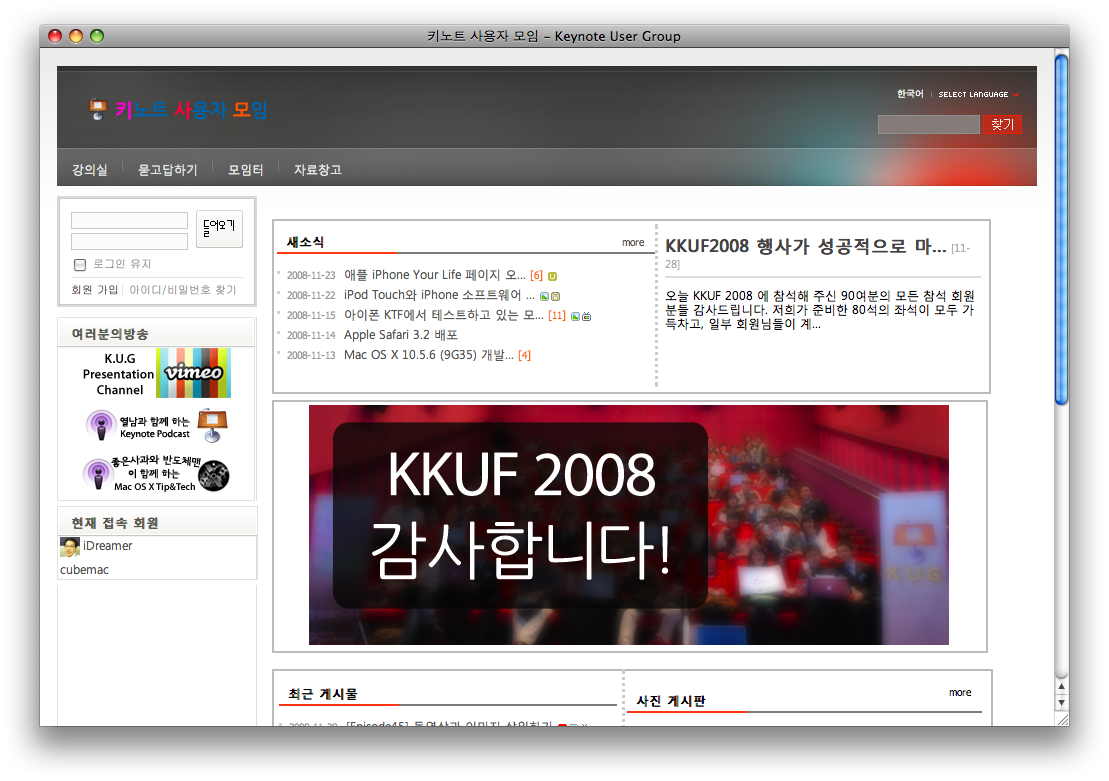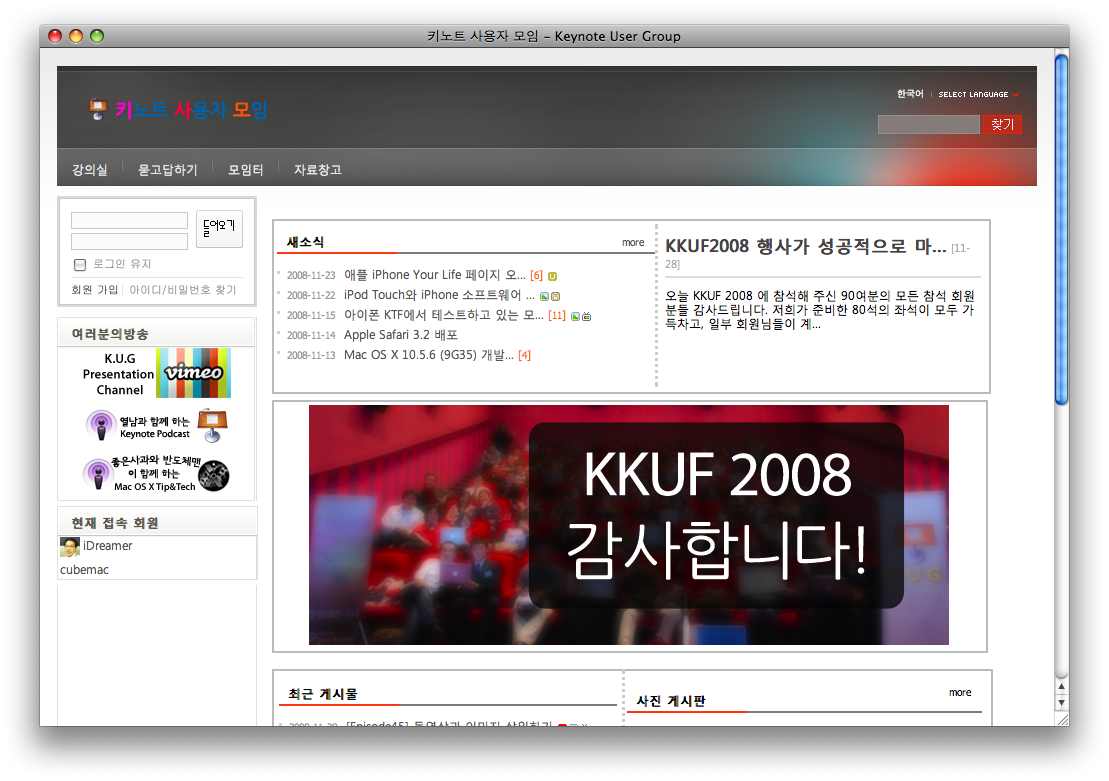사이트 등을 관리하다 보면 홈페이지의 배너를, 접속할 때 마다 다르게 출력해야되는 경우가 있습니다.


아직 제로보드 홈페이지상에서는 해당 기능을 찾을수 가 없어서, 어쩔수 없이 직접 제작하였습니다.
해당 파일은 아직 개발단계인데다, zbXE 1.0.6 용으로 개발되어서, XE 1.1에서는 어떻게 되련지 모르겠네요.
아무튼 항상 사용하는것은 아니지만, 지금은 http://www.ikeynote.net 에 와보시면 확인하실 수 있습니다.\
몇 번 새로고침을 해보시면 가운데 배너 모양이 달라진다는 것을 아실 수 있습니다.
(바뀌면 또 안나오겠네요;;)
아무튼 각 내용별로 priority 지정도 가능하니 나름 쓸만한것 같습니다.


'Digital Life > 만드는 이야기' 카테고리의 다른 글
| 제로보드 XE 포인트 기능 버그 수정 #2 (11) | 2009.01.08 |
|---|---|
| [zbXE] 일정 목록 출력 위젯 개발중... (1) | 2008.12.04 |
| 제로보드 XE 포인트 기능 버그 수정 #1 (3) | 2008.10.07 |
| 제로보드 XE 모듈 - 포인트 모듈에 포인트 로그 기능 추가 (1) | 2008.10.06 |
| 제로보드 XE - '권한이 없습니다' 메시지를 조금 더 다양하게! (5) | 2008.10.06 |


